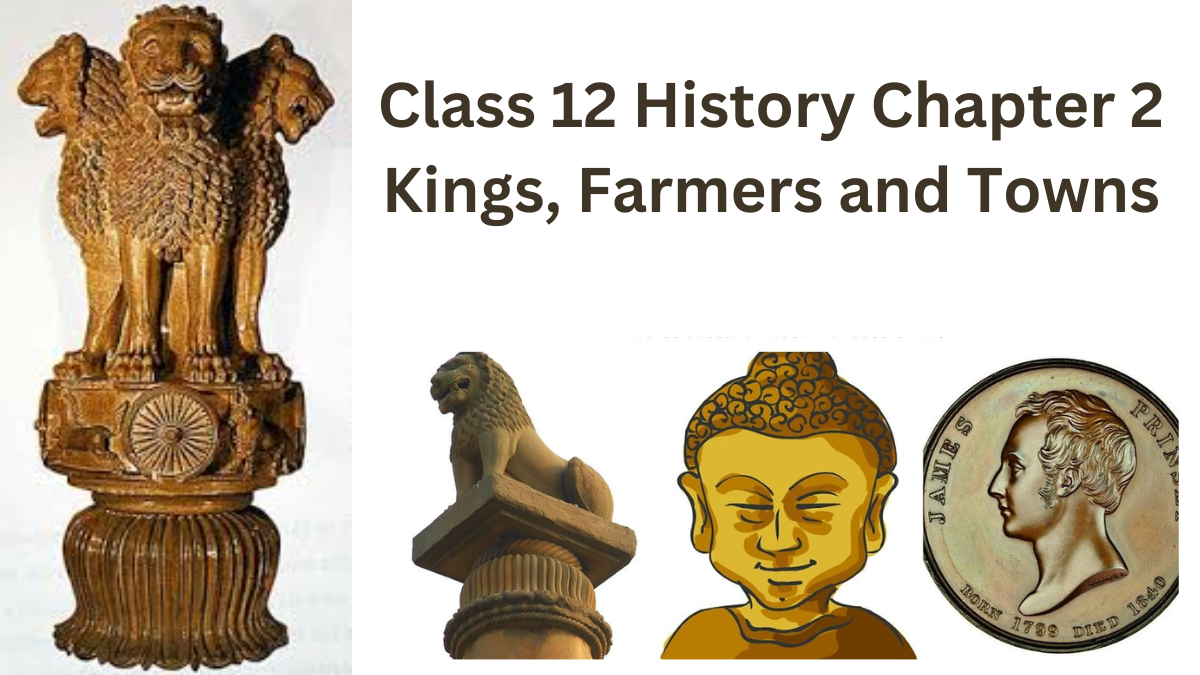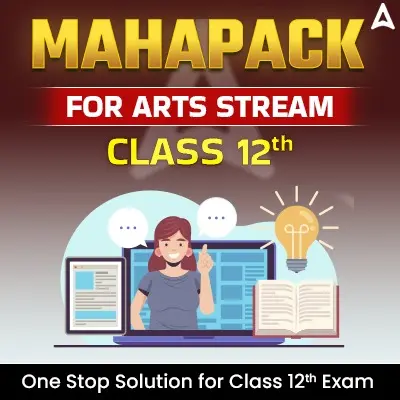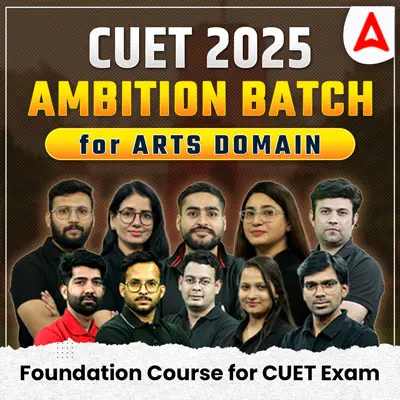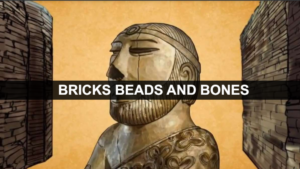The second chapter of the Class 12 NCERT Book, Kings, Farmers, and Towns, discusses the developments that occurred following the collapse of the Harappan civilization. It also gives you some insight. It teaches about the Harappan culture, food habits, farming techniques, and so on. After finishing the chapter, you may want to refer to the Class 12 History Chapter 2 Kings, Farmers, and Towns Notes to help you prepare questions and answers. Our Adda247 specialists have given you with the complete notes for Class 12 History Chapter 2 with the Oneshot quick revision video on this page.
Class 12 History Notes Chapter 2 Kings, Farmers, and Towns
Class 12 History Chapter 2 discusses the Kings, Farmers, Towns, Early States, and Economies from C.600 BCE to 600 CE. The chapter examines many facets of the Maurya and Gupta empires’ political and economic histories using historical sources. It also discusses Mahajanapadas, James Princep, and Piyadassi, as well as why the sixteenth century marked a watershed moment in early Indian history.
Our experienced qualified educators prepared the Chapter 2 Kings, Farmers, and Towns Class 12 History notes. These Notes PDFs contain each topic covered in a chapter with only the most important facts, neither too much nor too little. It helps Class 12 students establish a solid conceptual framework for History Chapter 2.
Looking for Class 12 Arts best Online Coaching – Join संकल्प Batch Today
Class 12 History Notes Chapter 2 Kings, Farmers and Towns Notes PDF
After reading the chapter from the book, these notes allow you to quickly review the entire chapter. However, the PDF is designed with easy-to-remember points and illustrations relating to the topic.The CBSE class 12th revision notes for Chapter 2 Kings, Farmers, and Towns are available in PDF format for free download. Download and keep it ready as review notes for Chapter 2: Kings, Farmers, and Towns. Class 12 Notes to boost your history scores.
Class 12 History Chapter 2 Kings, Farmers and Towns Notes
Chapter 2 Kings, Farmers and Towns Revision
If you have any doubts about this chapter, we recommend watching this video once. You can save it to your YouTube playlist to watch again in the coming days for revision.
Class 12 History Chapter 2 Kings, Farmers and Towns Notes
Introduction
• After the end of Harappan Civilisation, during a long span of 1500 years, there were several developments in different parts of the sub-continent.
• This was also the period during which the Rigveda was composed by people living along the Indus and its tributaries.
• James Prinsep, an officer in the mint of the East India Company, deciphered Brahmi and Kharosthi. These scripts were used in the earliest inscription and coins.
• Most of these mentioned a king referred to as piyadassi– meaning ‘pleasant to behold’. There were a few inscriptions which also referred to the king as Asoka.
The Earliest States
The Sixteen Mahajanapadas
• The 6th century BCE is often regarded as a major turning point in early Indian history.
• Early Buddhist and Jaina texts mention, sixteen states known as Mahajanapadas.
• Janapada means the land where a jana (a people, a clan or tribe) sets its foot or settles. It is a word
used in both Prakrit and Sanskrit.
• Most Mahajanapadas were ruled by kings, which some known as ganas or sanghas, were oligarchies, where power was shared by a number of men collectively called rajas.
• Each Mahajanapada had a capital city, which was often fortified.
The Sixteen Mahajanapadas
First Amongst the Sixteen : Magadha
• Between the 6th and the 4th centuries BCE, Magadha (in present day Bihar) became the most
powerful Mahajanapada.
• Magadha was a region where agriculture was especially productive. Iron mines (in present-day Jharkhand) were accessible and provided resources for tools and weapons.
• Initially, Rajagriha was the capital of Magadha which later shifted to Pataliputra (presently Patna) in
4th century BCE.
Mauryan Empire
• Chandragupta Maurya founded the Mauryan empire in c 321 BCE.
• He extended his control as far North-West upto Afghanistan and Baluchistan.
Finding Out about the Mauryas
• Historians have used a variety of sources to reconstruct the history of the Mauryan Empire. These
include archaeological finds, especially sculpture.
• Kautilya or Chanakya has mentioned about the Mauryan Empire in the Arthashastra.
• Buddhist, Jaina and puranic literature as well as inscription of Asoka, gives information about the
empire.
• Inscriptions also mention about the Mauryan empire. These are writings engraved on hard surfaces
such as stone, metal and pottery. These are the permanent records, some of which carry dates.
Administration of Mauryan Empire
• There were five major political centres in the empire i.e. the capital Pataliputra the provincial
centres of Taxila, Ujjayini, Tosali and Suvarnagiri.
• The administrative control was strongest in areas around the capital and the provincial centres.
• Communication along both land and riverine routes was vital for the existence of the empire.
Importance of Empire
• In the nineteenth century, the history of early India including that of Mauryan empire was discovered.
• Asoka came to be regarded as an inspiring figure by nationalist leaders. He was more humble than later rulers who adopted grandiose (magnificent) titles.
New Notions of Kingship
Chiefs and Kings in the South
• A chief was a powerful man whose position may or may not be hereditary. He receives
gifts from his sub-ordinates (unlike Kings who usually collect taxes) and often distributes these amongst his supporters.
• The new kingdoms that emerged in the Deccan and further South, included the chiefdoms of the Cholas, Cheras and Pandyas in Tamilakam (the name of the ancient Tamil country.
Divine Kings
• Kings often tried to identify themselves with a variety of deities in order to claim high status. This strategy was used by the Kushanas (c. 1st century BCE 1st century CE), who ruled over a vast kingdom
extending from Central Asia to North-West India.
• Colossal statues of Kushana rulers have been found installed in a shrine at Mat near Mathura (Uttar Pradesh).
• By the 4th century evidence of larger states, including the Gupta Empire, have been found. Many of these depended on samantas, men who maintained themselves through local resources including
control over land.
Popular Perceptions of Kings
• Historian have examined stories contained in anthologies such as the Jatakas and the Panchatantra.
• The Jatakas were written in Pali around the middle of the first millennium CE.
• One story known as the Gandatindu Jataka describes the condition of the subjects of a wicked king. These included elderly women and men, cultivators, herders, village boys and even animals.
A Changing Countryside
Strategies for Increasing Production
• From 6th century BCE, ploughing agriculture became prevalent. It was used in fertile alluvial river
valleys such as those of Ganga and Kaveri.
• The iron ploughshare led to a growth in agricultural productivity, but its use was restricted to certain parts of the sub-continent only.
Differences in Rural Society
• With an increase in production, there was a growing difference amongst people engaged in agriculture
like landless agricultural labourers, small peasants and large landholders.
• The term gahapati was often used in Pali texts to designate the second and third categories.
• Early Tamil literature (the Sangam texts) also mentions different categories of people living in the
villages i.e. large landowners or vellalar, ploughmen or uzhavar and slaves or adimai.
Land Grants and New Rural Elites
• Grants of land were started from the early centuries of the Common Era, many of which were recorded in inscriptions.
• The records that have survived are generally about grants to religious institutions or to Brahmanas.
Towns and Trade
New Cities
• The urban centres emerged in several parts of the sub-continent from c. 6th century BCE.
• All major towns were located along routes of communication, e.g., Pataliputra was on riverine routes.
• Others, such as Ujjayini, were along land routes and yet others, such as Puhar, were near the coast, from where sea routes began.
Urban Populations: Elites and Craftspersons
• The artefacts recovered from the excavation include fine pottery bowls and dishes, with a glossy finish, known as Northern Black Polished Ware, probably used by rich people.
• The artefacts also include ornaments, tools, weapons, vessels, figurines, made of a wide range of materials-gold, silver, copper, bronze, ivory, glass, shell and terracotta.
• Organisations of craft producers and merchants were known as guilds or shrenis. These guilds probably procured raw materials, regulated production and marketed the finished product.
Trade in the Subcontinent
• From the 6th century BCE, land and river routes crossed the sub-continent and extended in various
directions both overland and overseas.
• Those who travelled these routes included peddlers who probably travelled on foot and merchants who travelled with caravans of bullock carts.
• There were also seafarers, whose ventures were risky, but highly profitable. Successful merchants
were designated as masattuvan in Tamil and setthis and satthavahas in Prakrit.
Coins and Kings
• Punch-marked coins made of silver and copper (c. 6th century BCE onwards) were amongst the
earliest to be minted and used.
• Numismatists have studied these and other coins to reconstruct possible commercial networks.
• The first gold coins were issued in the 1st century CE by the Kushanas. These were virtually
identical in weight to those issued by contemporary Roman emperors and the Parthian rulers of Iran.
• Coins were also issued by tribal republics. Some of the most spectacular gold coins were issued by
the Gupta rulers.
Deciphering Inscriptions
Deciphering Brahmi
• Most scripts used to write modern Indian languages are derived from Brahmi script.
• From the late 18th century, European scholars with the help of Indian pandits could study several Manuscripts in Bengali and Devanagari and compared their letters with older letters.
• Scholars who studied early inscriptions sometimes assumed that these were in Sanskrit, although the earliest inscriptions were, in fact, in Prakrit.
• It was only after decades of careful investigations by several epigraphists that James Prinsep was able to decipher Asokan Brahmi in 1838.
Deciphering Kharosthi
• The Kharosthi script used in inscriptions in the North-West. Here, coins of Indo-Greek Kings are found who ruled over the area (c. 2nd-1st centuries BCE).
• These coins contain the names of kings written in Greek and Kharosthi scripts, later Prakrit was
identified on these coins.
Historical Evidence from Inscriptions
• According to the inscriptions, Devanampiya, often translated as ‘beloved of the gods’ and piyadassi as
‘pleasant to behold’ were the titles adopted by the Asoka.
• Most of the inscriptions were in Prakit language. Most Prakrit inscriptions were written in Brahmi script.
• After examining all these inscriptions and finding that they match in terms of content, style, language and palaeography, epigraphists have concluded that they were issued by the same ruler.
The Limitations of Inscriptional Evidence
• According to the inscriptions, Devanampiya, often translated as ‘beloved of the gods’ and piyadassi
as ‘pleasant to behold’ were the titles adopted by the Asoka.
• Most of the inscriptions were in Prakit language. Most Prakrit inscriptions were written in Brahmi
script.
• After examining all these inscriptions and finding that they match in terms of content, style, language
and palaeography, epigraphists have concluded that they were issued by the same ruler.
Also Check: Chapter 1 Bricks, Beads and Bones The Harappan Civilisation Notes











 Class 12 History Chapter 1 Bricks, Beads...
Class 12 History Chapter 1 Bricks, Beads...








